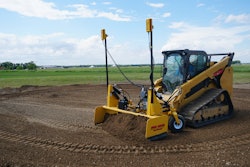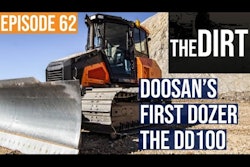
In the last 18 months, supply chain shortages have roiled the construction industry as contractors and dealers scramble to get parts, attachments and machines. One company that’s seeing its business booming in all of this is the parts and equipment broker Lighthouse Machinery.
We caught up with Brad Pruitt, parts sales manager at Lighthouse Machinery during the AEMP Connect 2022 conference in March. In a subsequent interview, Pruitt shared with us his understanding of the problem and what contractors and dealers need to know to manage their shortages and help prevent downtime due to future supply chain issues.
Sam Light started Lighthouse Machinery about three years ago, focusing primarily on equipment. But just before the supply chain crisis hit, he realized there was a tremendous need for parts to support the equipment. “We've gone from one guy working out of the pole barn to six people now, and we've just bought a building to stock inventory,” says Pruitt.
Everybody surprised
“I'd love to sit here and say we saw this coming, but we didn’t,” says Pruitt. The first clues came in 2020. “It started suddenly. We were having trouble getting filters and ground engaging tools. High volume items that we've never had trouble getting before were suddenly in short supply.”
To meet the demand, the company is sourcing parts from all over the world, including Asia, Spain and South Africa. “We’ve got 14 containers on order right now, four of which should be here shortly with ground engaging tools from China,” says Pruitt. “We’ve already pre-sold the majority of that to dealers and large customers who are willing to buy a truckload at a time.”
Rethinking inventory
Not that long ago, dealers, OEMs and even contractors were operating on the principle of just-in-time inventory. The idea was to avoid tying up your cash in inventory since a streamlined and digitally connected global logistics chain could get you almost anything in 24 hours or less. The pandemic, shipping container shortages, issues at the ports, trucking strikes and unforeseen demand, blew that idea to pieces.
“It's changed how we've approached our customers," says Pruitt. “We're encouraging them to buy for the future because we don't know what the future holds. They need to buy it when they can get it and plan a lot further into the future than what they've done in the past. We really can't do it the old way anymore.”
GET situation dire
And while there are shortages of all types of replacement and repair parts, the biggest deficit, says Pruitt, is ground engaging tools, especially those used in the mining industry. “They’re almost impossible to find," Pruitt says. “We spend all day, every day, looking for them, selling what we can find and looking for more. We’ve got a bunch on order, but they’re not here yet. I’m still four or five weeks out.”
The lesson, says Pruitt, is to look at the parts you use and wear out repeatedly — cutting edges, bucket teeth and the like — and figure out what your burn rate is for a year. Then find a way to get them secured. “It may take a half a year to get them to you,” he says.
DEF pumps
Precision parts such as injectors and turbos are also in short supply. “Diesel exhaust fluid pumps are nonexistent,” says Pruitt. “You cannot find them and there is no aftermarket. They are a patented product, and you can’t have somebody just make you one.”
Turbochargers are another problem, says Pruitt. “There are some electronic components on the new turbos that you just can’t get.”
In the past, most supply chain disruptions were isolated, such as when the tsunami and Fukushima nuclear plant meltdown hit Japan in 2011. Other regions could step in to fill the gap quickly. But with the current convergence of problems, the whole globe is struggling with issues.
There’s no quick fix on the horizon, says Pruitt. “I think we're still going to have problems for another year or two at least, because I just don't see us rebounding quite that fast.”














